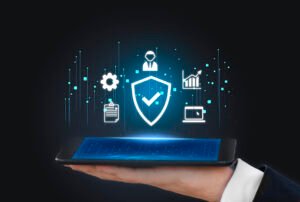Introduction:
Security flaws and exposes put computer systems and software programs at serious risk in today’s fast-paced technological world. The Common Vulnerabilities and Exposures (CVE) system was developed to address this recurrent issue. An organized method for locating, naming, and publishing details regarding security problems is offered by CVE. This article examines CVE’s technical components, importance, and influence in improving cybersecurity.
What is CVE?
Common Vulnerabilities and Exposures, or CVE, is what it means. It is a community-driven movement with the goal of developing a common vocabulary and reference framework for describing and debating security vulnerabilities. Each vulnerability or exposure is given a unique identification by CVE, known as a CVE ID, allowing for simple monitoring and communication across many platforms, products, and suppliers. This uniform understanding is made possible by this shared language, which also makes it easier to share information about security vulnerabilities.
The Role of MITRE:
The CVE system is managed and maintained in large part by the MITRE Corporation, a nonprofit organization that runs federally supported research and development facilities. To guarantee the accuracy and integrity of the CVE database, MITRE works closely with a wide range of stakeholders, including security researchers, suppliers, and users. They are a respected authority in this industry due to their knowledge and passion to cybersecurity
How CVE Works:
The CVE process starts when a new vulnerability or exposure is identified. The specifics of the security weakness, including its impact, the systems or software it affects, and any potential mitigations or solutions, are analyzed and documented by security researchers, vendors, or other interested parties. They then ask MITRE for a CVE ID, a special number that has been allocated to that specific vulnerability.
Once a CVE ID is given, it serves as a constant point of reference for the vulnerability. As a result, security experts and businesses may easily monitor, debate, and exchange information about vulnerability across numerous platforms and technologies. Security advisories, tools, and vulnerability databases all frequently employ CVE IDs to make it simpler to search for and correlate vulnerability data.
Benefits of CVE:
The CVE system brings several benefits to the cybersecurity landscape:
1. Standardized Communication:
The CVE standardizes the terminology used to describe vulnerabilities, facilitating accurate and consistent communication between security experts and organizations. Collaboration and information sharing is improved by this homogeneity.
2. Centralized Vulnerability Database:
By acting as a central repository for vulnerabilities, the CVE database facilitates access to and analysis of vulnerability data. This aids security teams in effectively prioritizing and fixing issues.
3. Enhanced Awareness:
CVE enables security professionals to stay updated on the newest vulnerabilities and exposures, assisting them in making decisions about the safety of their systems. Additionally, it makes it possible for vendors to quickly publish patches and upgrades to fix these vulnerabilities.
4. Vendor Neutrality:
CVE assists in overcoming the difficulties caused by various suppliers utilizing various vulnerability naming protocols by offering a framework that is vendor neutral. This encourages a more open-minded and coordinated strategy for resolving cybersecurity issues.
Conclusion:
In summary, Common Vulnerabilities and Exposures (CVE) is a critical tool for advancing cybersecurity collaboration and knowledge. By giving vulnerabilities distinctive identities, CVE creates a shared vocabulary that makes effective communication, information exchange, and remediation operations possible. CVE continues to be an essential tool for security professionals and organizations to protect their systems and data in a connected world as cybersecurity threats increase.








